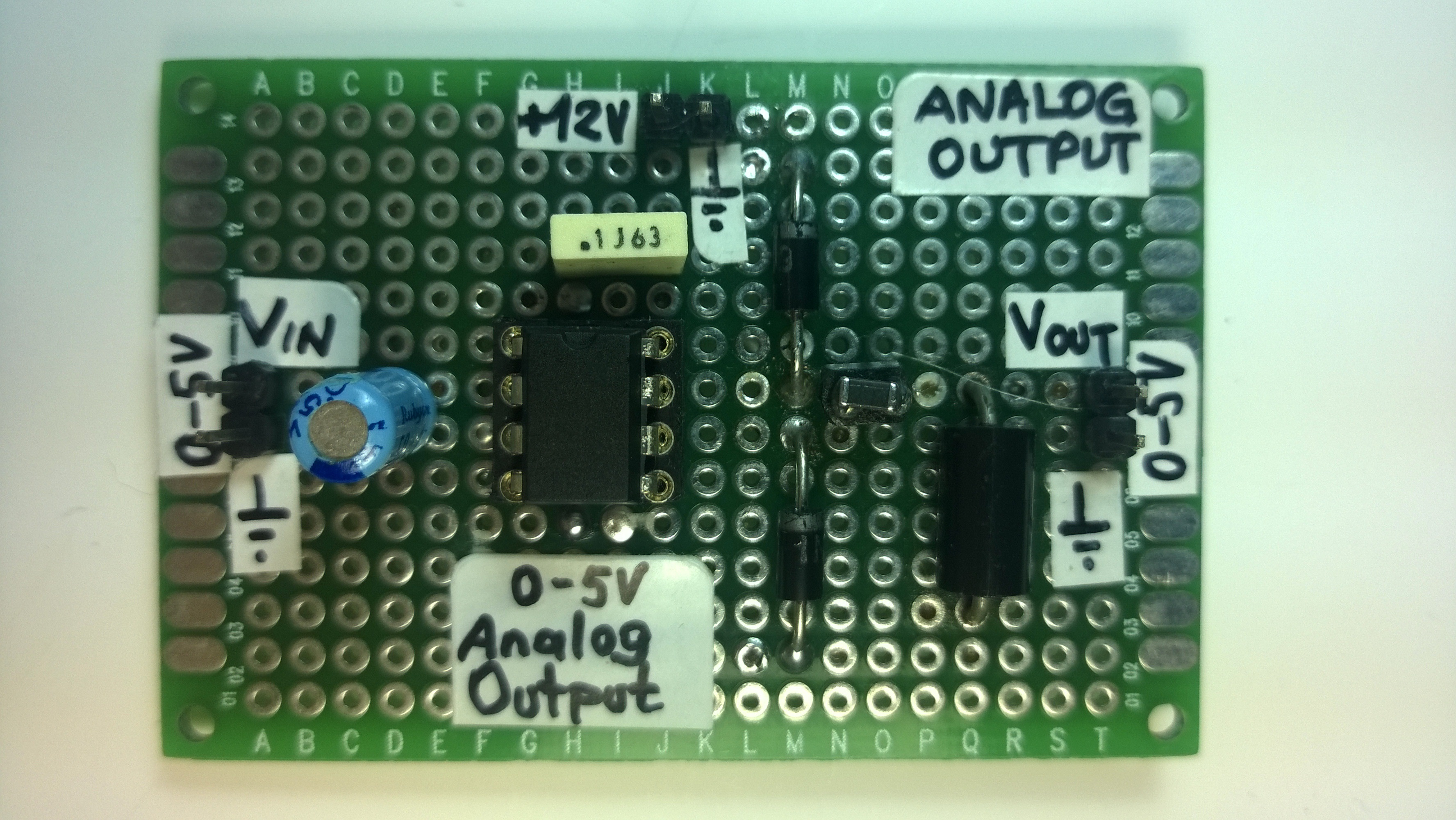By Dr Murat Uzam, Academic and Technical Author, Turkey
This column covers a project involving thirteen analogue input modules and seven analogue output modules for a 5V microcontroller’s ADC/DAC channels. In this issue, we’ll focus on the first analogue output module, or 0-5V analogue output module that requires a +12V DC power supply; see Figures 1 and 2.
We’ve assumed that VIN comes from the DAC output of a 5V microcontroller with a value of 0.00V £ VIN £ 5.00V; when 0.00V £ VIN £ 5.00V, VOUT = VIN. The input and output voltage range are the same, or 0-5V; see the relationship between VOUT and VIN in Figure 3.
Due to the limited current drive capability, the buffer amplifier (a voltage follower) LM358P-A is used on the DAC output. Dual series Schottky barrier diodes D1 and D2 divert any overcurrent coming from terminal VOUT to the power supply or ground. A ferrite bead is connected in series with the output path to add isolation and decoupling from high-frequency transient noises. A TVS (Transient Voltage Suppressor) is used to filter and suppress any transients coming from terminal VOUT. This circuit is capable of supplying up to 20mA output current.









